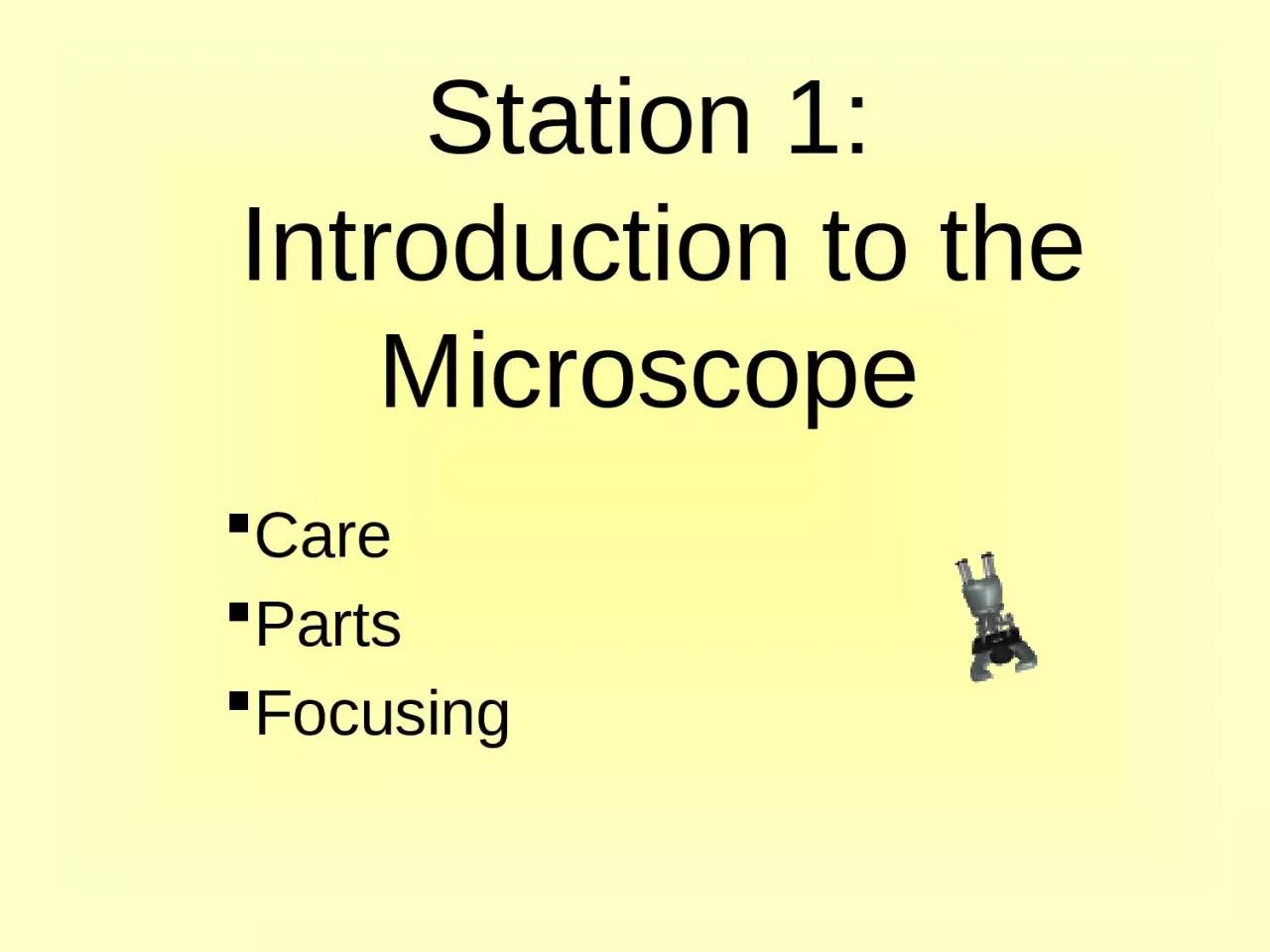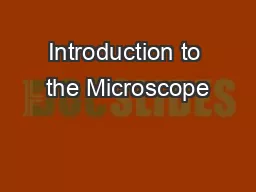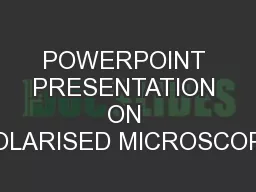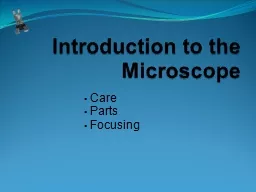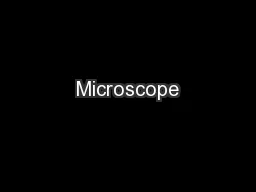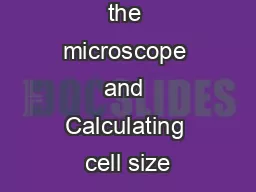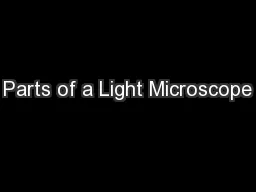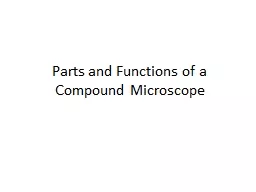PPT-Station 1: Introduction to the Microscope
Author : sadie | Published Date : 2022-06-18
Care Parts Focusing Always carry with 2 hands Do not force knobs Always store covered Keep objects clear of desk and cords Only use lens paper for cleaning Microscope
Presentation Embed Code
Download Presentation
Download Presentation The PPT/PDF document "Station 1: Introduction to the Microsco..." is the property of its rightful owner. Permission is granted to download and print the materials on this website for personal, non-commercial use only, and to display it on your personal computer provided you do not modify the materials and that you retain all copyright notices contained in the materials. By downloading content from our website, you accept the terms of this agreement.
Station 1: Introduction to the Microscope: Transcript
Care Parts Focusing Always carry with 2 hands Do not force knobs Always store covered Keep objects clear of desk and cords Only use lens paper for cleaning Microscope Care Eyepiece Body . This model comes with color corrected infinity optical system (CSIS), a movable large working distance condenser, 45 degree inclined trinocular head, high eye-point Plan eyepieces, infinity long working distance PLAN achromatic objectives and infinity long working distance PLAN phase contrast objectives. This microscope offers nine brightfield magnification powers, 40X, 60X, 100X, 150X, 200X, 300X, 400X, 600X & 900X, and six phase contrast settings, 100X, 150X, 200X, 300X, 400X & 600X. Its 30 watt adopt Kohler illumination system was designed for 90-240V wide voltage power supplies. We always offer our customers the best quality for the lowest price. We pride ourselves on providing high quality products, unbeatable low prices, huge selections, and personalized customer service. We always offer our customers the best quality for the lowest price. We pride ourselves on providing high quality products, unbeatable low prices, huge selections, and personalized customer service. History. Types. Care. Parts. Focusing. Diggs?. Hans and . Zcharias. Janssen?. Who invented the microscope?. Antony van . Leeuwenhook. Who really used the microscope?. He figured out that living things are made of cells.. POLARISED LIGHT MICROSCOPE . Designed to observe optically anisotropic specimen (BIREFRINGENCE SPECIMEN). Equipped with POLARISER and ANALYZER . Works on the principle of INTERFERENCE . COMPONENTS OF POLARISED . Care. Parts. Focusing. Types of Microscopes. Compound Light . Microscope - . the models found in most schools, use compound lenses to magnify objects. The lenses bend or refract light to make the object beneath them appear closer.. Basics. Nosepiece. Objectives. Stage Clips. Light. Ocular lens. (Eyepiece). Arm. Stage. Coarse . Adjustment. Knob. Fine . Adjustment. Knob. Always carry a microscope with one hand holding the arm and one hand under the base.. Introduction to the Microscope. Types of . Microscopes. Calibration. Focusing. Types of Microscopes. Light Microscope - . Ocular lens on eyepiece and objective lens on turret multiply magnification.. From its humble beginnings the microscope has undergone numerous revisions since Leeuwenhoek’s day. But its usefulness has certainly not diminished. Numerous types of Microscopes are currently being used. Visit the following for a more detailed description of them. . http://biology.unm.edu/ccouncil/Biology_203/Summaries/Microscopes.htm. 1. When moving your microscope, always carry it with both hands. Grasp the arm with one hand and place the other hand under the base for support.. How to Focus on Specimen. Turn on light source on high. Turn the objective to low (4x). Lower the objective lens so that it is close but not touching the slide. Center the image by moving the stage. Adjust the diaphragm for optimum light. Light Microscope. Simple – uses a single lens. Compound – uses a set of lenses or lens systems. Simple Light Microscope. Compound Microscope. Mechanical Parts. Used to support and adjust the parts. Where do they meet? Where do they “meet”? Train #1 leaves station A and accelerates east at 0.5 m/s/s. At the same instant #1 leaves station A, train #2 leaves station B, which is 1.0 km east of A, and accelerates west at 0.25m/s/s. Relative to station A, where would the two trains pass? Assume they were on parallel tracks. Microscope Review The diagram represents a cell in the field of view of a compound light microscope. In which direction should the slide be moved on the microscope stage to center the cell in the field of view
Download Document
Here is the link to download the presentation.
"Station 1: Introduction to the Microscope"The content belongs to its owner. You may download and print it for personal use, without modification, and keep all copyright notices. By downloading, you agree to these terms.
Related Documents

